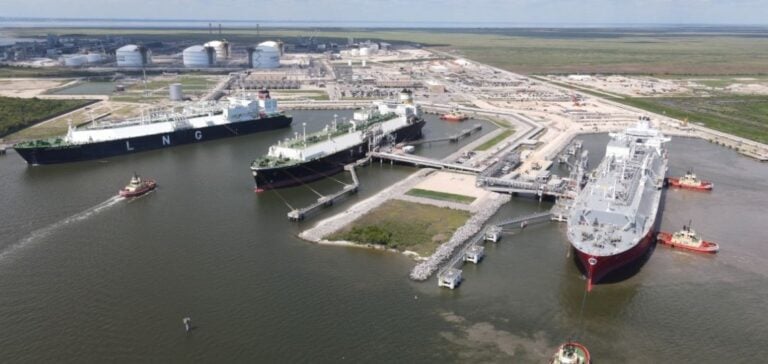U.S. natural gas futures markets signal a significant price increase for 2025.
Based on current data, futures contracts on the benchmark Henry Hub are projecting an average price of $3.20 per million British thermal units (mmBtu), compared with an average of $2.22 this year.
This marked increase of 44% would represent the strongest annual rise since 2022.
It comes at a time when demand for natural gas is being boosted by electricity and industrial consumption, as well as liquefied natural gas (LNG) exports.
Overcapacity and Rising Demand
In 2024, natural gas markets in the United States were marked by high inventories and low prices.
After a mild winter, inventories remained around 10% above the historical average, limiting price increases despite high consumption due to hot summer weather.
Dry gas production, averaging 102.5 billion cubic feet per day (Bcf/d) in the first eight months of 2024, reached record levels, supported by a slight increase in production year-on-year.
The Energy Information Administration (EIA) forecasts a further increase in average production to 105 Bcf/d in 2025.
Impact of LNG Exports and Energy Consumption
LNG exports, a mainstay of gas demand, are set to grow strongly.
Gas consumption by LNG exporters, or “feedgas”, is set to rise from the current 13 Bcf/d to 17 Bcf/d by the end of 2025, according to LSEG.
This rise coincides with the commissioning of new export terminals and increased global demand.
At the same time, natural gas consumption by the power sector, which accounts for 38% of total gas demand in the USA, continues to grow, with gas-fired power plants gradually replacing coal-fired ones.
Market Impact and Player Strategies
Higher natural gas prices should lead to a supply response, encouraging producers to step up their activities.
However, higher costs could also weigh on demand, particularly in price-sensitive industrial sectors.
Changes in gas prices could also impact on the profitability of LNG exports, particularly for operators without long-term contracts with favorable terms.
Export prices remain favorable, with a significant differential between the Henry Hub and the European market, but this dynamic could change.
Currently, the average gas price in the Netherlands is around 4.6 times that of the Henry Hub, offering attractive margin opportunities for US exporters.
However, this differential is set to narrow to 3.5 times by the end of 2025, due in particular to rising US prices and a possible drop in European prices.
Outlook for Investors and Operators
Fluctuating gas futures prices in the US and international markets continue to shape the strategic decisions of producers and exporters.
Managing supply and demand becomes crucial as factors such as weather conditions, energy policies and global LNG demand influence forecasts.
Market players are closely monitoring these variables to adjust their short- and long-term positioning, well aware of the uncertainties inherent in the balance between supply and demand.






















